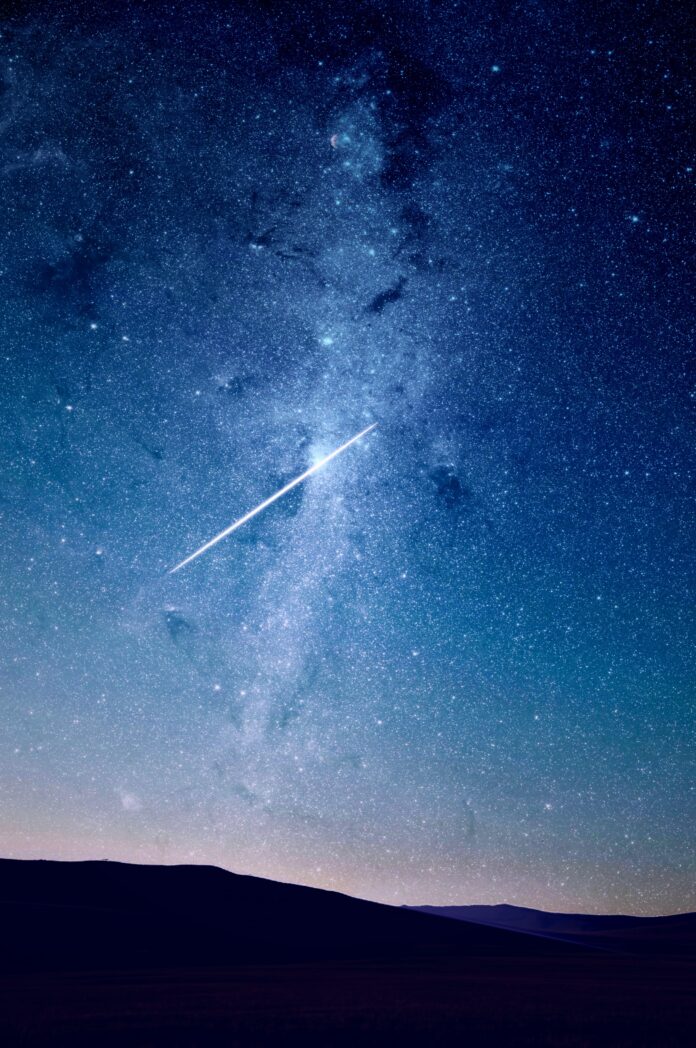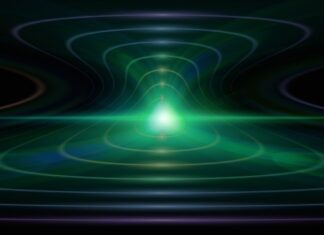Meteoroids are fascinating celestial objects that play a significant role in our understanding of the universe. These small rocky or metallic fragments orbit the Sun and occasionally enter Earth’s atmosphere, creating mesmerizing meteor showers and occasionally striking the planet’s surface as meteorites. Below, you will find a concise list of ten important facts about meteoroids.
1. Definition and Composition: Meteoroids are small objects in space that range in size from tiny dust particles to larger rocks. They are composed of various materials, including metals (such as iron and nickel) and rocks (like basalt and olivine). Their composition depends on their origin, which can be either from asteroids or comets.
2. Origin and Formation: Meteoroids originate from different sources in the Solar System. The majority are remnants of asteroids, which are rocky bodies that orbit the Sun primarily in the asteroid belt between Mars and Jupiter. Other meteoroids come from comets, icy bodies that typically reside in the outer reaches of the Solar System.
3. Characteristics and Size: Meteoroids can vary greatly in size, ranging from tiny micrometeoroids, which are less than a millimeter in diameter, to larger objects measuring several meters across. Most meteoroids are no larger than a pebble.
4. Atmospheric Entry: When a meteoroid enters Earth’s atmosphere, it experiences extreme heat due to friction. This process causes the surrounding air to glow, resulting in a phenomenon known as a meteor or shooting star. The meteoroid itself vaporizes and disintegrates during this fiery passage through the atmosphere.
5. Meteor Showers: Meteor showers occur when Earth passes through the debris left behind by a comet’s or asteroid’s orbit. These showers are named after the constellation from which the meteors appear to radiate (e.g., the Perseids originate from the constellation Perseus). Meteor showers are regular events, and observers can anticipate an increased number of visible meteors during these periods.
6. Bolides and Fireballs: Occasionally, larger meteoroids produce especially bright and intense fireballs known as bolides. These spectacular events occur when a meteoroid is larger and brighter than an average meteor. Bolides often create sonic booms and can sometimes survive their atmospheric entry to become meteorites.
7. Meteorites: When a meteoroid successfully reaches Earth’s surface without completely vaporizing, it is called a meteorite. These fragments provide valuable insights into the composition and history of our Solar System. Scientists study meteorites to learn about the processes that occurred during the formation of planets and other celestial bodies.
8. Impact Hazards: While most meteoroids burn up harmlessly in the atmosphere, larger objects can pose a threat if they collide with Earth’s surface. Although the probability of a significant impact is low, scientists actively monitor Near-Earth Objects (NEOs) to identify any potentially hazardous objects and develop strategies to mitigate the risk.
9. Space Missions: Several space missions have been launched to study meteoroids and their origins. NASA’s Stardust mission, for instance, collected samples of comet dust and returned them to Earth. Similarly, the Japanese spacecraft Hayabusa2 successfully gathered samples from the asteroid Ryugu and returned them to Earth in 2020.
10. Citizen Science: Amateur astronomers and meteor enthusiasts play a crucial role in meteoroid studies. Organizations like the American Meteor Society (AMS) encourage observers to report meteor sightings, which helps scientists track meteor showers, determine their trajectories, and understand the characteristics of meteoroids.
Meteoroids are small celestial bodies that travel through space, occasionally entering Earth’s atmosphere to create stunning meteor showers. Understanding their composition, origins, and characteristics provides valuable insights into the formation of our Solar System and the potential hazards they pose. Scientists continue to study meteoroids through space missions and collaborations with citizen scientists to unravel the mysteries of these captivating objects.
Meteoroids, small celestial objects, are essential for expanding our knowledge of the universe. They orbit the Sun and occasionally make their way into Earth’s atmosphere, resulting in captivating meteor showers and, on rare occasions, impacting the planet’s surface as meteorites. Here are ten important facts about meteoroids:
Meteoroids, meteoroids, meteoroids – this term refers to small objects in space that range in size from minuscule dust particles to larger rocks. They are composed of diverse materials, including metals like iron and nickel, as well as rocks such as basalt and olivine. The composition of meteoroids depends on their origin, which can be traced back to either asteroids or comets.
These intriguing objects originate from various sources in the Solar System. Most meteoroids are remnants of asteroids, which are rocky bodies that primarily orbit the Sun in the asteroid belt between Mars and Jupiter. However, some meteoroids come from comets, icy bodies that usually reside in the outer regions of the Solar System.
Meteoroids exhibit a wide range of characteristics and sizes. They can be as small as tiny micrometeoroids, measuring less than a millimeter in diameter, or as large as several meters across. However, the majority of meteoroids are no larger than pebbles.
When a meteoroid enters Earth’s atmosphere, it undergoes a dramatic transformation. The intense friction generates extreme heat, causing the surrounding air to glow and creating a visually stunning phenomenon known as a meteor or shooting star. During this fiery passage through the atmosphere, the meteoroid itself vaporizes and disintegrates.
Meteor showers, a captivating astronomical event, occur when Earth passes through the debris left behind by the orbit of a comet or asteroid. These showers are named after the constellation from which the meteors appear to radiate. For example, the Perseids originate from the constellation Perseus. Meteor showers are regular events, and observers can anticipate an increased number of visible meteors during these periods.
Occasionally, larger meteoroids produce exceptionally bright and intense fireballs known as bolides. These dazzling events occur when a meteoroid is larger and brighter than an average meteor. Bolides often create sonic booms, and in some cases, fragments of the bolide survive the atmospheric entry and become meteorites.
Meteorites are the term used for meteoroids that successfully reach Earth’s surface without completely vaporizing. These fragments provide valuable insights into the composition and history of our Solar System. Scientists study meteorites to learn about the processes that occurred during the formation of planets and other celestial bodies.
While most meteoroids burn up harmlessly in the atmosphere, larger objects can pose a threat if they collide with Earth’s surface. Although the probability of a significant impact is low, scientists actively monitor Near-Earth Objects (NEOs) to identify any potentially hazardous objects and develop strategies to mitigate the risk.
Space missions dedicated to studying meteoroids and their origins have been launched. For instance, NASA’s Stardust mission collected samples of comet dust and successfully returned them to Earth. Similarly, the Japanese spacecraft Hayabusa2 gathered samples from the asteroid Ryugu and brought them back to Earth in 2020.
Amateur astronomers and meteor enthusiasts play a crucial role in meteoroid studies. Citizen science organizations like the American Meteor Society (AMS) encourage observers to report meteor sightings. These reports help scientists track meteor showers, determine their trajectories, and gain a better understanding of the characteristics of meteoroids.
In conclusion, meteoroids are captivating celestial objects that provide valuable insights into the formation of our Solar System. Their composition, origin, and characteristics are crucial to expanding our understanding of the universe. Through space missions and collaborations with citizen scientists, researchers continue to unravel the mysteries surrounding meteoroids and their role in the cosmic dance of celestial bodies.






















